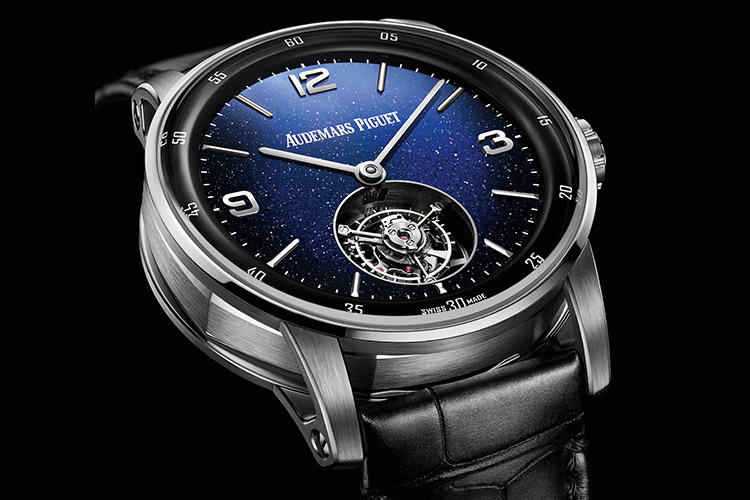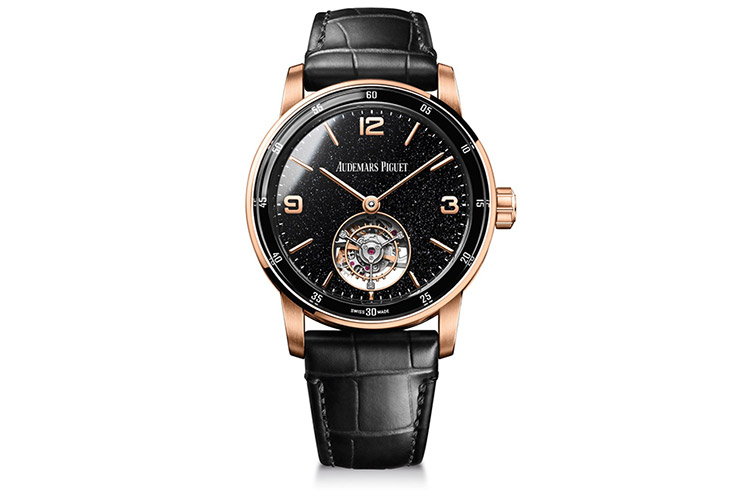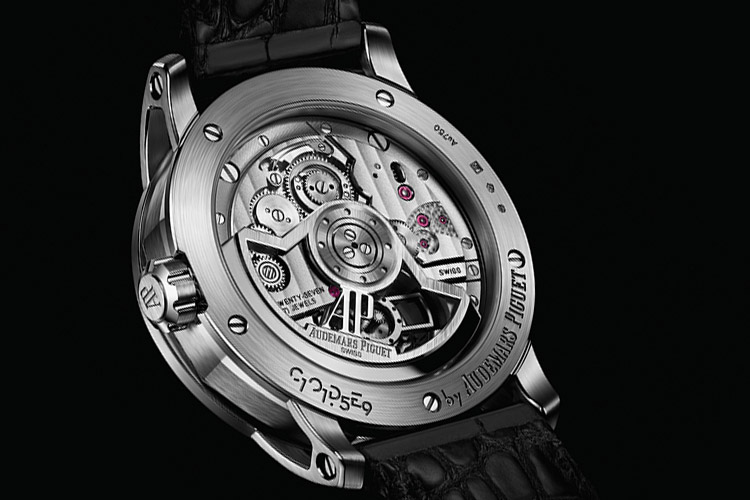Audemars Piguet adds Selfwinding Flying Tourbillons to Code 11.59

Swiss Haute Horlogerie manufacturer Audemars Piguet revealed two new takes on the Code 11.59 by Audemars Piguet Selfwinding Flying Tourbillon. Their new dial design combines the refinement of enamel with the shimmering of aventurine glass for a unique effect of star-lit sky
To complement the collection’s complex architecture and countless details, the Manufacture’s dial makers have covered the timepiece’s gold dial with a blend of crushed aventurine glass and “Grand Feu” enamel for an expressive touch of creativity. Each “Grand Feu” enamel dial is unique due to the organic nature of its materials, as well as the hand manufacturing technique and distinctive cooking time. A very thin layer of glass sand mixed with water is applied by hand on the crushed aventurine glass, before being heated at more than 800°C in a dedicated oven. The procedure is repeated multiple times to achieve remarkable transparency, depth and light. Each cooking session necessitates different temperatures and times.
Black Aventurine and Pink Gold
The first model features a black aventurine enamel dial serving as backdrop to hand-finished 18-carat pink gold hour-markers, Arabic numerals and hands, and is illuminated by an 18-carat pink gold case. The flying tourbillon cage located at 6 o’clock also presents a subtle pink gold-toned touch. The complex double-curved sapphire crystal, which perfectly integrates the curvature of the extra-thin bezel, magnifies the dial’s night-sky effect by adding a mesmerising play of light. The collection’s dedicated open-worked oscillating weight, visible through the sapphire caseback, is honed from 22-carat pink gold and echoes the case’s colour.

Smoked Blue and White Gold
The second variation unites a blue aventurine enamel dial with a case, hour-markers, Arabic numerals and hands in 18-carat white gold, entirely hand-finished. The dial is further endowed with a smoked effect for added depth and refinement, with gradation achieved by incorporating blue and black aventurine glass into the enamel. The rhodium-toned flying tourbillon cage at 6 o’clock echoes the bright tonality of the watch’s white gold case. To match with the case’s colour, the open-worked oscillating weight, visible through the sapphire caseback, is made in rhodium-toned 22-carat pink gold.
The gold cases of both models are adorned with an alternation of satin-brushed and polished surfaces and feature an extra-thin bezel, an octagonal middle case, a round caseback and highly stylised lugs.
Both timepieces are powered by the Selfwinding Manufacture calibre 2950, which combines a flying tourbillon with a central rotor. Audemars Piguet’s first flying tourbillon wristwatch made its appearance in 2018 in the Royal Oak Concept collection. The Code 11.59 by Audemars Piguet represents the Manufacture’s second collection to host this prestigious mechanism.






